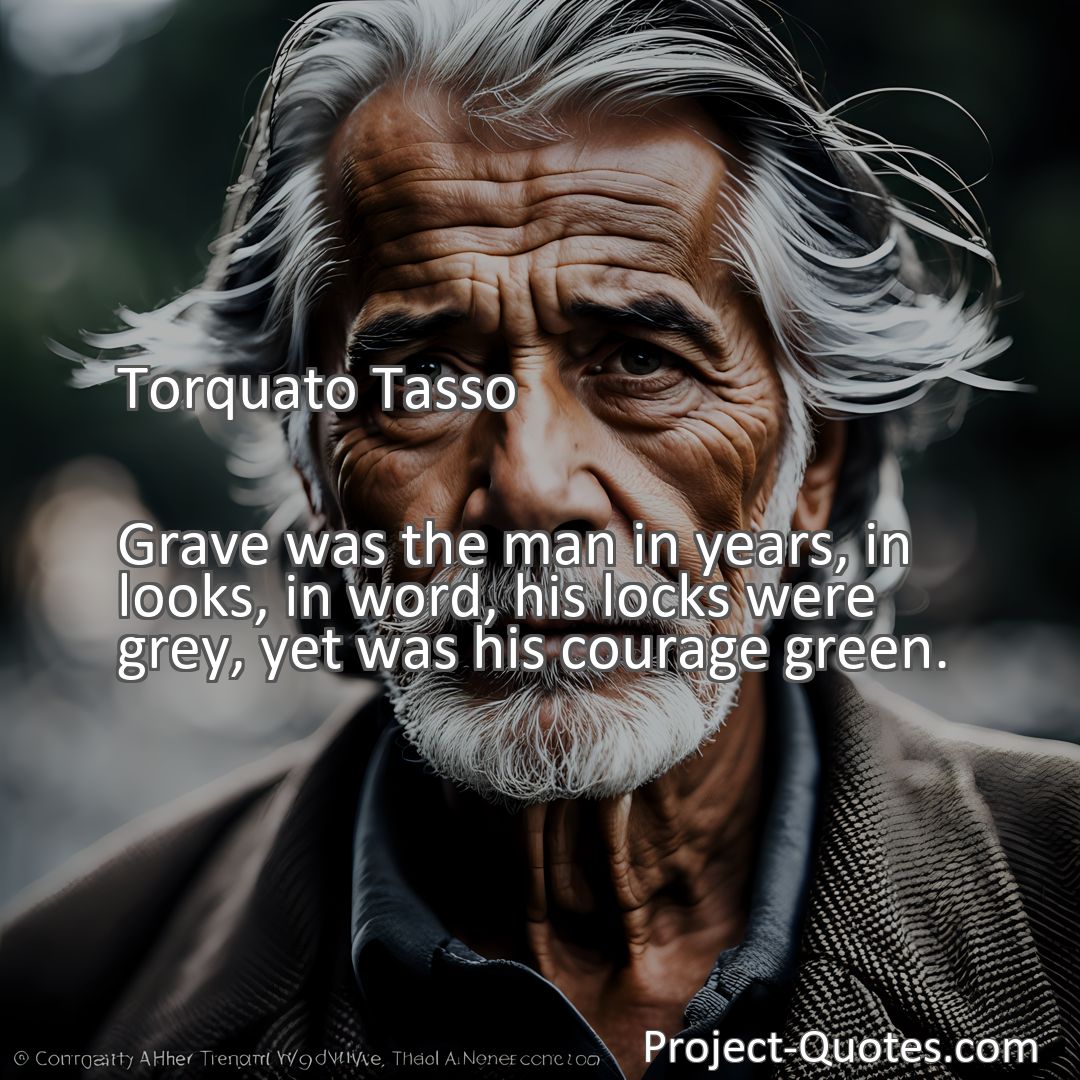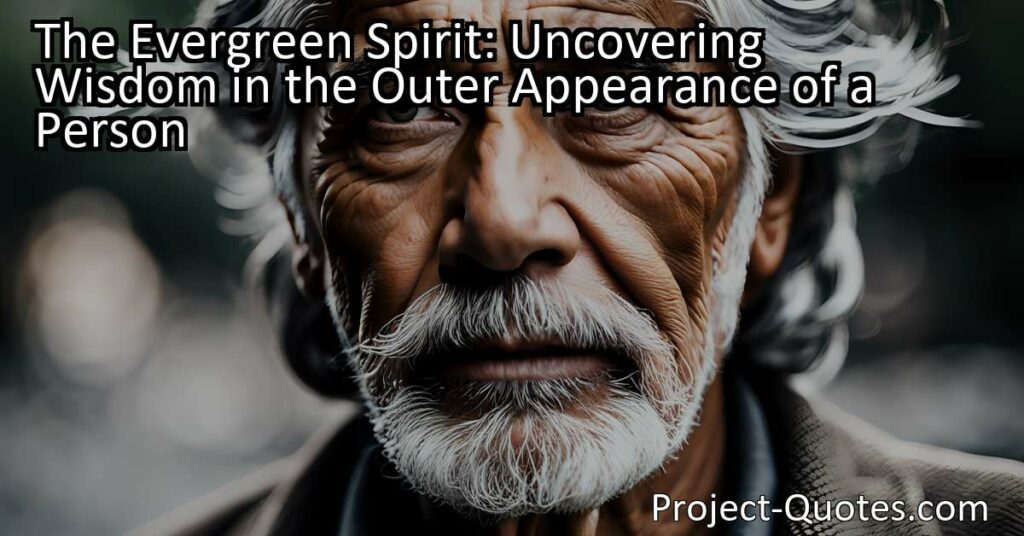Grave was the man in years, in looks, in word, his locks were grey, yet was his courage green.
Torquato Tasso
“The Evergreen Spirit: Uncovering Wisdom in the Outer Appearance of a Person” explores the idea that a person’s outer appearance can reveal wisdom and experience, despite their age. The quote by Torquato Tasso reminds us that courage and bravery are not limited by time or appearance. It encourages us to look beyond surface-level impressions and recognize the enduring strength and wisdom found within individuals whose locks may be grey, but whose spirits remain youthful and determined.
Table of Contents
Meaning of Quote – Grave was the man in years, in looks, in word, his locks were grey, yet was his courage green.
The renowned poet Torquato Tasso once wrote, “Grave was the man in years, in looks, in word, his locks were grey, yet was his courage green.” These words beautifully capture the essence of a person whose outer appearance may reveal wisdom and age, but whose spirit remains youthful and full of vigor. This quote provides us with a powerful reminder that acts of bravery and bravery itself do not have an age limit, and that courage can defy the passage of time.
When we think of someone who is “grave,” we often envision a person who is serious, thoughtful, and perhaps even stern. Tasso’s reference to the man’s appearance as “grave in looks” suggests a visual representation of his wisdom and experience. The idea of his locks being grey symbolizes a long life filled with moments of triumph and hardship. However, we must not be fooled by the surface level interpretation of his age. For within this seemingly aged body, lies a spirit that remains resolute and dauntless.
The phrase “yet was his courage green” intrigues us with its contrasting imagery. Although the color green traditionally represents youthfulness and vitality, it is unusual to associate it with courage. Tasso skillfully employs this unexpected juxtaposition to emphasize the idea that this man’s resolve and fearlessness have not faded or diminished over time. Despite his appearance, his heart beats with the passion and determination of a youthful warrior.
The significance of age and experience in relation to courage and bravery is a concept that stretches across time and resonates with people of all generations. Often, society places undue emphasis on the vigor and fearlessness of the young, while overlooking the enduring strength and wisdom of the elderly. Tasso’s quote challenges this narrow perception, reminding us that courage knows no boundaries, no expiration date.
In our society, it is common to associate heroism with physical strength or acts of bravery performed in the heat of battle. But Tasso’s quote encourages us to look beyond these surface-level impressions. The true measure of valor lies not solely in physical prowess, but also in the strength of character, resolve, and determination.
As we reflect on Tasso’s words, we can draw inspiration from various examples throughout history. Consider, for instance, Mahatma Gandhi, who led the nonviolent struggle for India’s independence. Gandhi was far from being a young warrior, yet his commitment to nonviolence and justice sparked a revolution that would change the course of history. His courage, like that of the man in Tasso’s quote, defied his age, appearances, and societal expectations.
Similarly, Nelson Mandela, who spent 27 years in prison, emerged as a symbol of strength and unity for the people of South Africa. Despite the hardships he endured, Mandela’s spirit remained steadfast, and his courage in the face of adversity inspired a nation and the world. Like the man in Tasso’s quote, his locks may have been grey, but his determination never waned.
It is crucial to remember that courage comes in many forms and can be found in everyday heroes as well. We may encounter individuals in our own lives who embody the essence of Tasso’s quote. They may not be famous or widely known, but their acts of courage and resilience touch our hearts and inspire us to be better.
Consider the single parent who works multiple jobs to provide for their children, never faltering in their dedication and sacrifice. Or the student who stands up against injustice, speaking out for those who cannot find their own voice. These individuals may not possess physical strength or youthful looks, but they possess a remarkable spirit that exemplifies the true meaning of courage.
Tasso’s quote encourages us to not dismiss or underestimate those whose appearances suggest otherwise. It urges us to seek out the stories of people whose locks may be grey, but whose hearts are forever green. Their courage and determination should serve as a reminder that age is merely a number, and the fire within us can burn brightly no matter how many years have passed.
In conclusion, Torquato Tasso’s quote invites us to reassess our perceptions of age and bravery. It urges us to recognize that courage knows no limitations, transcending the boundaries of time and appearances. The man described in the quote may be “grave in years, in looks, in word,” but his courage remains unwavering and evergreen. Let us learn from this powerful message and celebrate the resilience and strength found within individuals whose locks may be grey, but whose spirits never fade. May we remember their stories and carry forward their legacies of courage, regardless of our own stage in life.
I hope this quote inspired image brings you hope and peace. Share it with someone who needs it today!


